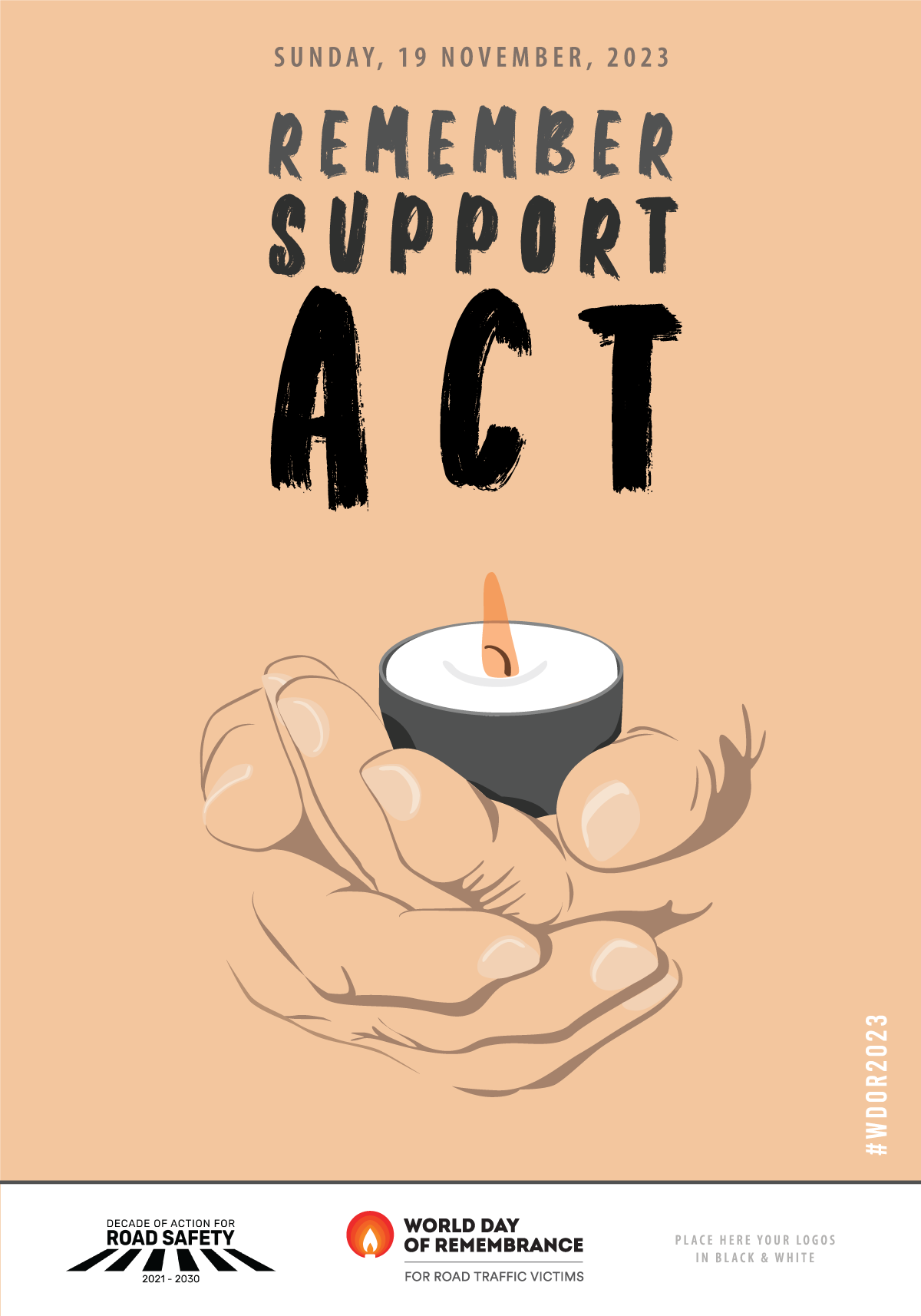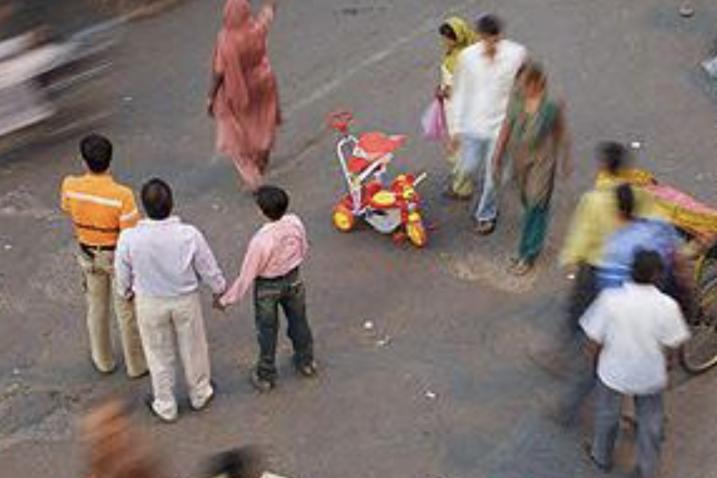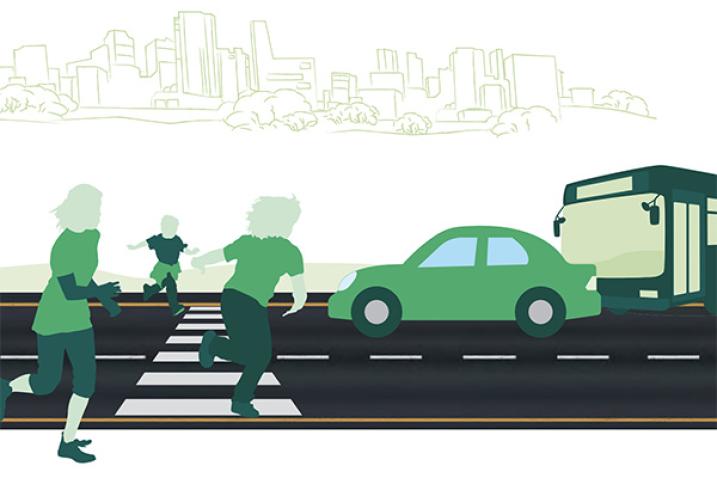Road traffic injuries - leading killer of people aged 5-29 years
The Global status report on road safety, launched by WHO in December 2018, highlights that the number of annual road traffic deaths has reached 1.35 million. Road traffic injuries are now the leading killer of people aged 5-29 years. The burden is disproportionately borne by pedestrians, cyclists and motorcyclists, in particular those living in developing countries.
The report also indicates that progress to realize Sustainable Development Goal (SDG) target 3.6 – which calls for a 50% reduction in the number of road traffic deaths by 2020 – remains far from sufficient.
More than half of all road traffic deaths are among vulnerable road users: pedestrians, cyclists, and motorcyclists. Pedestrians, cyclists, and riders of motorized 2- and 3-wheelers and their passengers are collectively known as "vulnerable road users" and account for half of all road traffic deaths around the world. A higher proportion of vulnerable road users die in low-income countries than in high-income countries.
Remember. Support. Act.
The World Day of Remembrance for Road Traffic Victims 2023 puts the spotlight on justice. Traffic law enforcement, thorough investigation after a crash to find out if a crime was committed and to prevent recurrence, criminal prosecution where appropriate and civil compensation are all part of the justice system. When carried out seriously, fairly and consistently, such a system is what road crash victims who have been injured or had a family member killed as the result of someone’s law–breaking or negligence deserve and wish for, since it also represents a main factor of prevention and this would mean that lessons are learnt from their tragedies so that they may not be repeated.
Origins and significance of the Day
Since the adoption of the World Day of Remembrance for Road Traffic Victims, pursuant to General Assembly resolution 60/5, the observance has spread to a growing number of countries on every continent.
The Day has become an important tool in global efforts to reduce road casualties. It offers an opportunity for drawing attention to the scale of emotional and economic devastation caused by road crashes and for giving recognition to the suffering of road crash victims and the work of support and rescue services.
The objectives of the World Day of Remembrance for Road Traffic Victims are to provide a platform for road traffic victims and their families to:
- remember all people killed and seriously injured on the roads;
- acknowledge the crucial work of the emergency services;
- draw attention to the generally trivial legal response to culpable road deaths and injuries
- advocate for better support for road traffic victims and victim families;
- promote evidence-based actions to prevent and eventually stop further road traffic deaths and injuries.
A dedicated website was launched to make the Day more widely known and to link countries through sharing common objectives and the remembrance of people killed and injured in crashes.
In September 2020, the UN General Assembly adopted resolution A/RES/74/299 "Improving global road safety", proclaiming the Decade of Action for Road Safety 2021-2030, with the ambitious target of preventing at least 50% of road traffic deaths and injuries by 2030. WHO and the UN regional commissions, in cooperation with other partners in the UN Road Safety Collaboration, have developed a Global Plan for the Decade of Action.
Also, to highlight the plight of children on the world’s roads and generate action to better ensure their safety, the UN organizes the Global Road Safety Week.
Resources
Documents
- The First Global Ministerial Conference on Road Safety held in Moscow from 19-20 November 2009 adopted the Moscow Declaration
- Global Plan for the Decade of Action for Road Safety 2011-2020
- Global Plan for the Decade of Action for Road Safety 2021-2030
- Youth Declarations for Road Safety
- UN Transport Conventions and Agreements
- Political declaration of the high-level meeting on improving global road safety (A/RES/76/294)
- Improving global road safety (A/RES/74/299, A/RES/72/271, A/RES/70/260, A/RES/66/260, A/RES/64/255, A/RES/62/244, A/RES/60/5, A/RES/58/289)
- Global road safety crisis (A/RES/58/9, A/RES/57/309)
- Note by the Secretary-General — Improving global road safety (A/66/389)
- Note by the Secretary-General — Report on improving global road safety, prepared by the World Health Organization in consultation with the regional commissions and other partners of the United Nations Road Safety Collaboration (A/64/266, A/62/257)
- Report of the Secretary-General on Global road safety crisis (A/60/181, A/58/228)
- Road safety and health (WHA57.10 (2004))
- Prevention of road traffic accidents (WHA27.59 (1974))
- Prevention of Traffic Accidents (WHA19.36 (1966))
Publications
- Global status report on road safety 2018
- World report on road traffic injury prevention
- Cyclist safety: an information resource for decision-makers and practitioners
- Pedestrian safety: a road safety manual for decision-makers and practitioners
- Data systems: A road safety manual for decision-makers and particitioners
- Road Safety Forum Brochures and Publications






